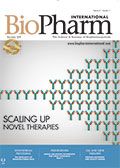FDA Promotes Complex Generics and Combination Products
To achieve a more dynamic marketplace, FDA is issuingguidance documents and targeted advisories to support R&D on complex generics and combination products.
A main strategy for challenging the high prices of innovator therapies is to support the development and production of more competitive generic drugs and biosimilars, as outlined in FDA’s Drug Competition Action Plan, issued in June 2017. One sign of success is the agency’s approval of a record 971 new generic drugs this past fiscal year, largely due to devising a more streamlined and efficient review process and providing added advice and assistance on product development to manufacturers.
FDA is applying a similar approach to spurring development of more complex generic drugs and combination products, such as injectables, topicals, and patches that act locally on the skin, inhaled drugs affecting the lungs directly, or eye drops that act on the surface of the eye. These all raise challenging issues for production, formulation, and demonstrating equivalence to a brand reference listed drug (RLD). One result is that competition is limited for complex and combination products that involve complex and expensive product development and production methods, permitting brands to retain high prices even years after losing exclusivity. To achieve a more dynamic marketplace, FDA is issuing more guidance documents and targeted advisories to support R&D on these products, as outlined by FDA Commissioner Scott Gottlieb in a statement on advancing the development of generic copies of complex drugs to improve patient access to medicines.
This initiative produced a revised draft guidance advising industry on the design and conduct of studies to evaluate the adhesive performance of proposed generic transdermal and topical delivery systems (TDS) products. A second guidance provides recommendations for the design and conduct of studies to evaluate in vivo skin irritation and sensitization potential of such treatments. In addition, FDA issued 235 product-specific guidance documents to help manufacturers identify appropriate methods for developing specific generic TDS products.
Anna Abram, FDA deputy commissioner for policy, planning, legislation, and analysis, provided more details on these efforts at an October 2018 workshop on complex generic drug-device combination products sponsored by the Drug Information Association (DIA). She described FDA strategies for spurring the development and review of complex therapies that are difficult to formulate and to manufacture because the drug acts directly on the skin or eye or lungs, producing a therapeutic effect that is hard to measure for bioequivalence through the blood, as with conventional generic drugs. Challenges in identifying the most accurate, sensitive, efficient, and reproducible method for demonstrating “sameness” between the proposed generic and RLD erect notable hurdles in developing complex generic drug-device combination products, Abram pointed out. FDA seeks to engage earlier and more extensively with manufacturers in pre-ANDA meetings to discuss new or alternative development strategies for complex drug-device products.
Complex generics and other combination drug/biologic-device products also can obtain advice and guidance from FDA’s Office of Combination Products (OCP), which has expanded to better manage the growing number of requests from manufacturers for decisions on designating the review of a combination product to the appropriate lead FDA product center. FDA’s inter-center consult process seeks to ensure consistency and clarity in the combination product review process, explained OCP Director Thinh Nguyen at the subsequent DIA Combination Products conference. A forthcoming Q&A guidance on combination products may provide additional specifics on essential performance requirements, sample sizes for human factors studies, manufacturer consultation with FDA during development, and strategies for documenting sameness to an RLD.
FDA officials noted that they succeeded in addressing some of these issues in the ageny’s recent approval of the first generic for EpiPen, the widely prescribed epinephrine auto-injector that has been in the spotlight in recent years for its high price, made possible by limited competition. The new alternative offers a lower-cost option for patients and may help protect against product shortages, Abram commented.
To further advance complex generics, Gottlieb noted that FDA is devising more sensitive and accurate analytical tools and in-vitro tests to demonstrate sameness between a generic and brand. A forthcoming umbrella guidance, moreover, should help generics makers overcome the most challenging regulatory and scientific issues, as will more targeted guidance documents that address legal issues blocking generic competition.
Article Details
BioPharm International
Vol. 31, No. 11
November 2018
Pages: 8–9
Citation
When referring to this article, please cite it as. J. Wechsler, "FDA Promotes Complex Generics and Combination Products," BioPharm International 31 (11) November 2018.
